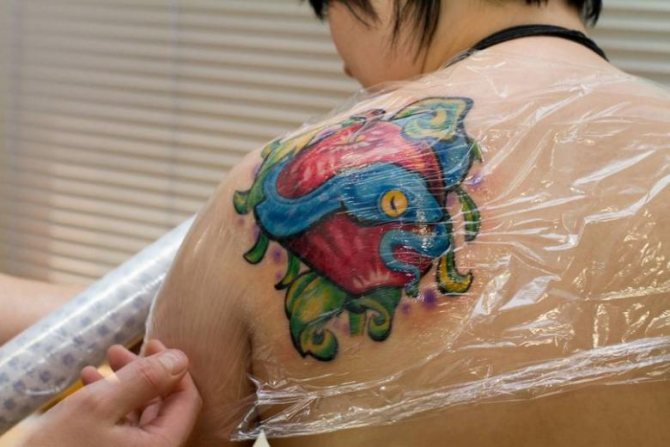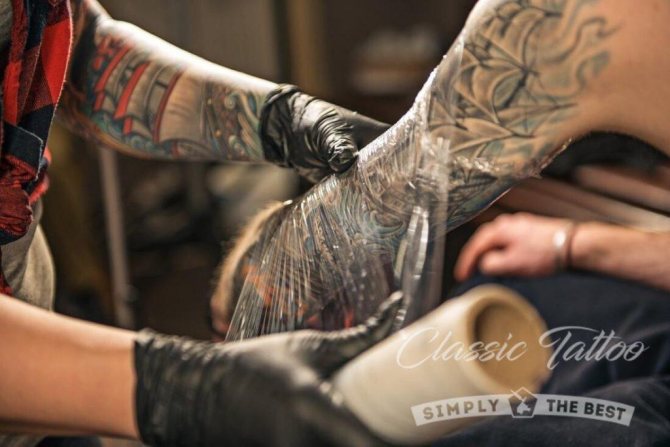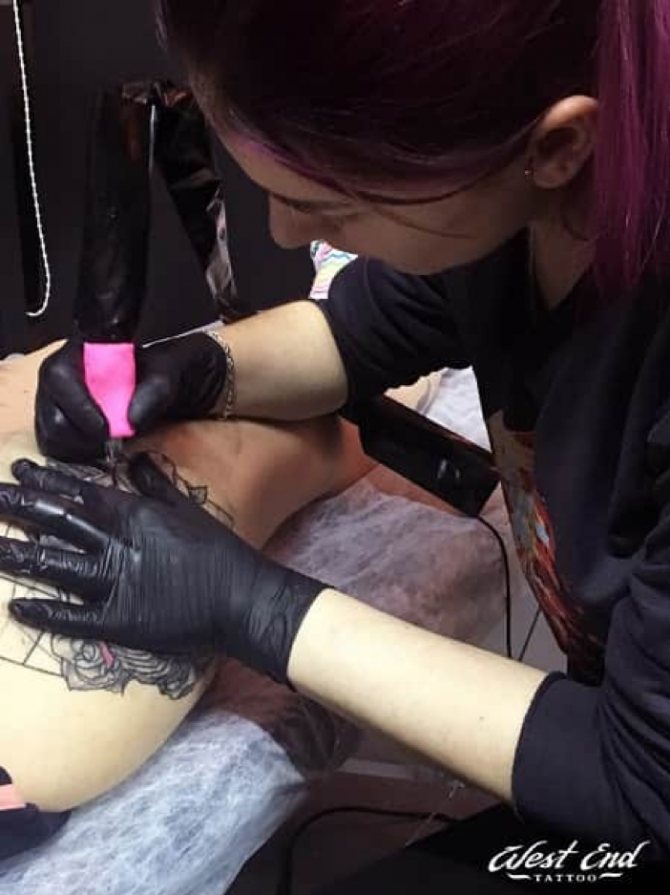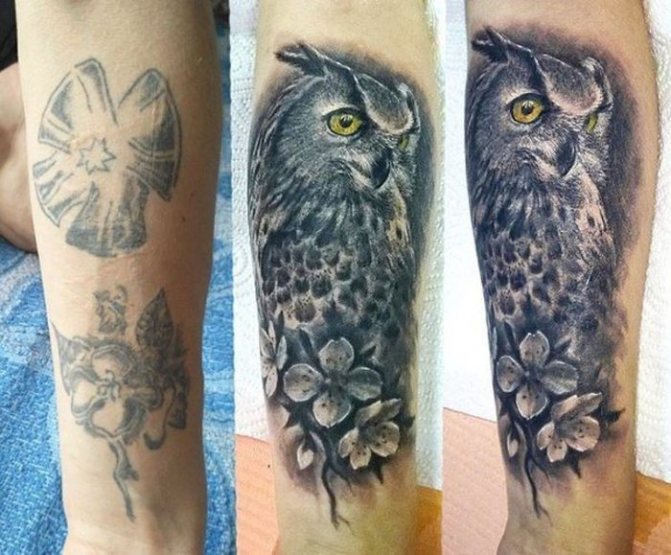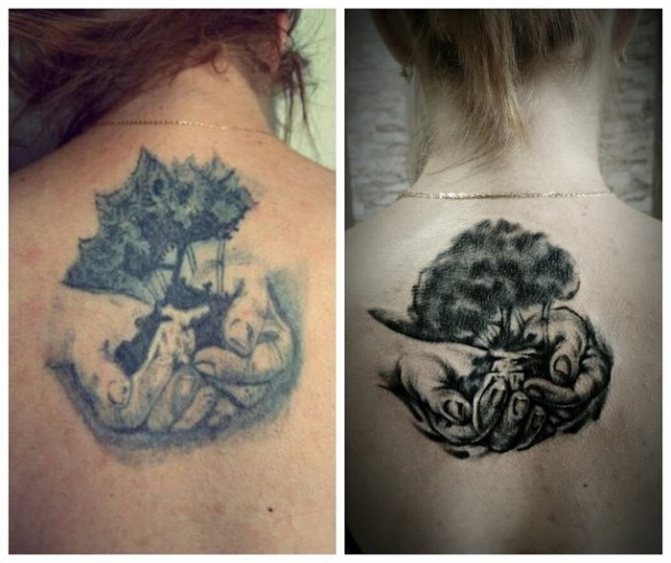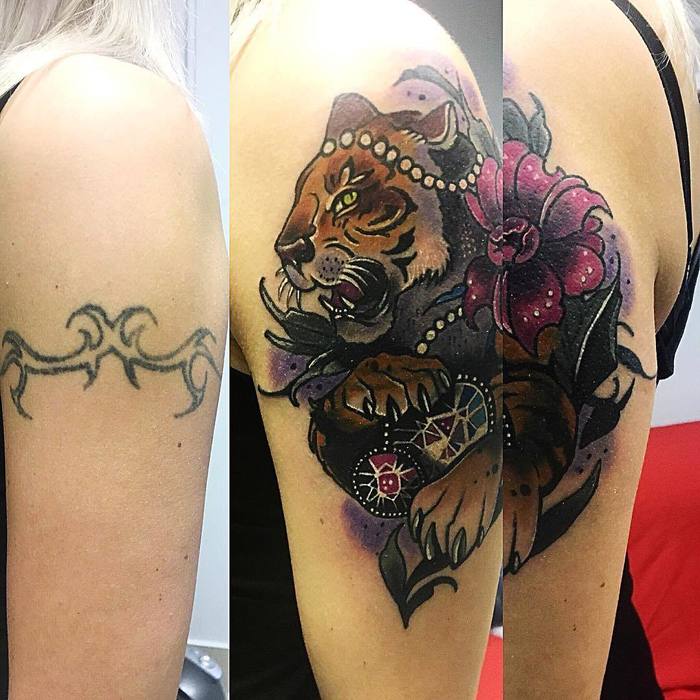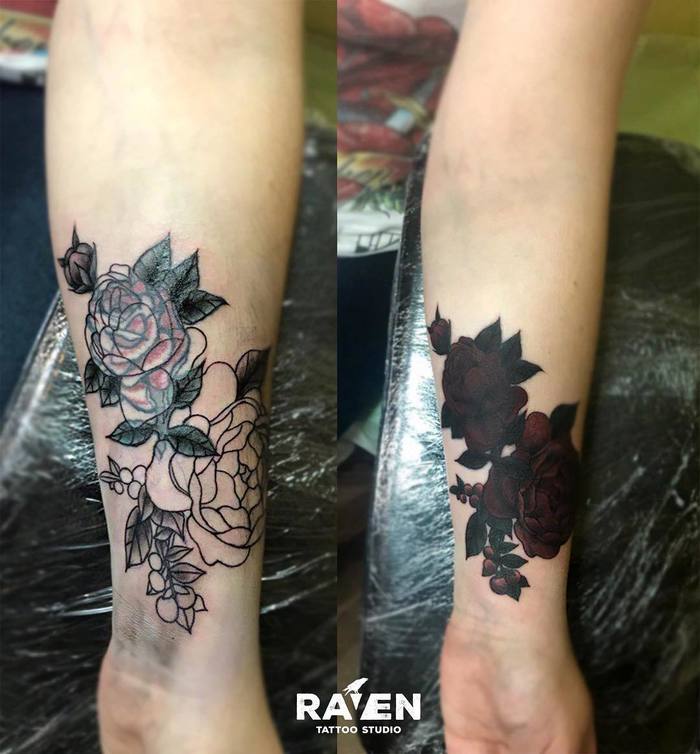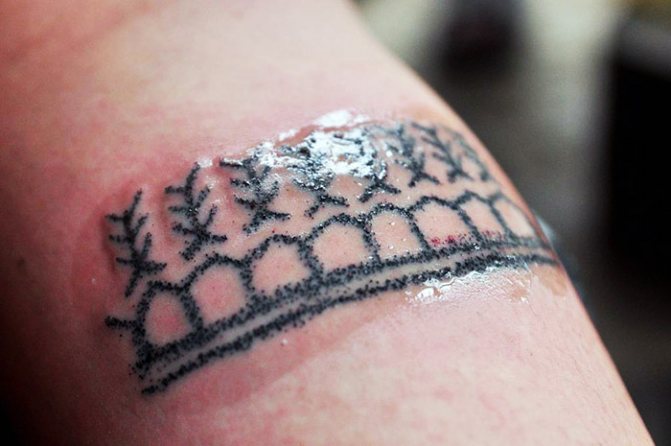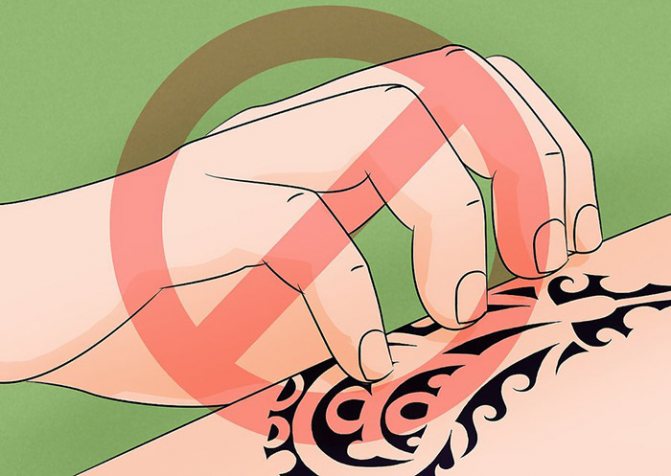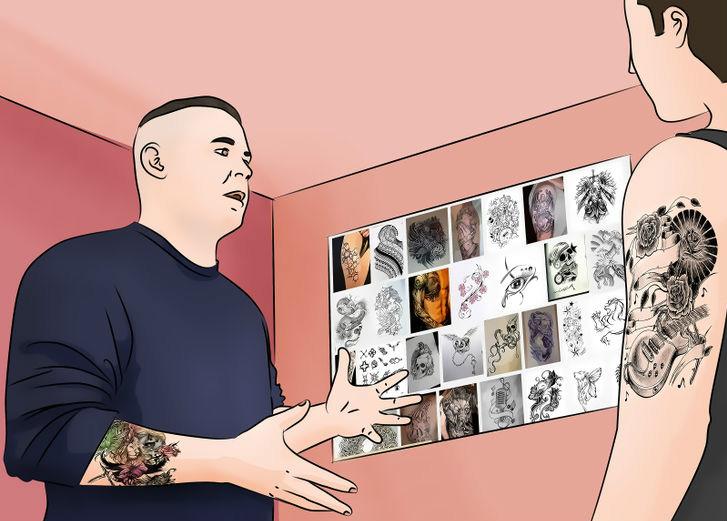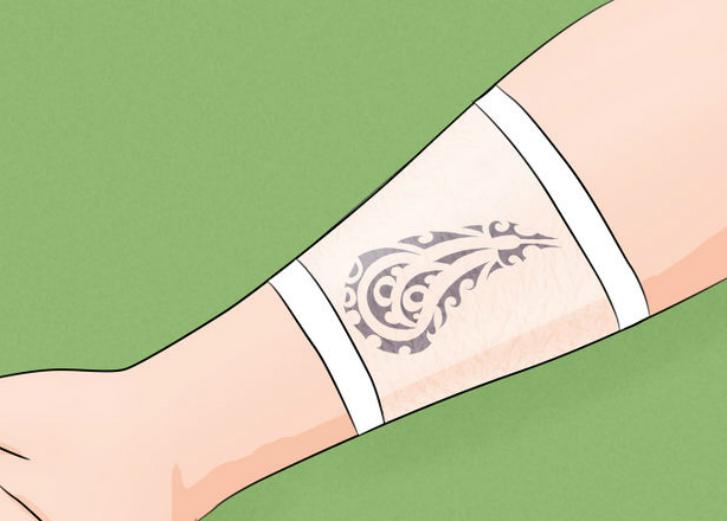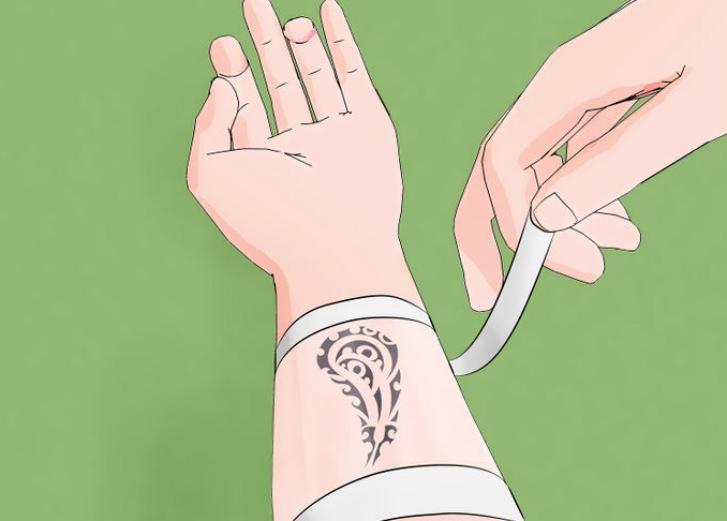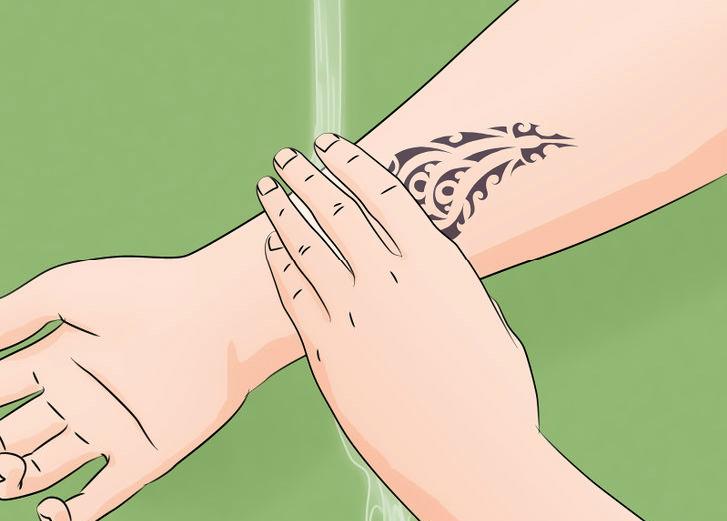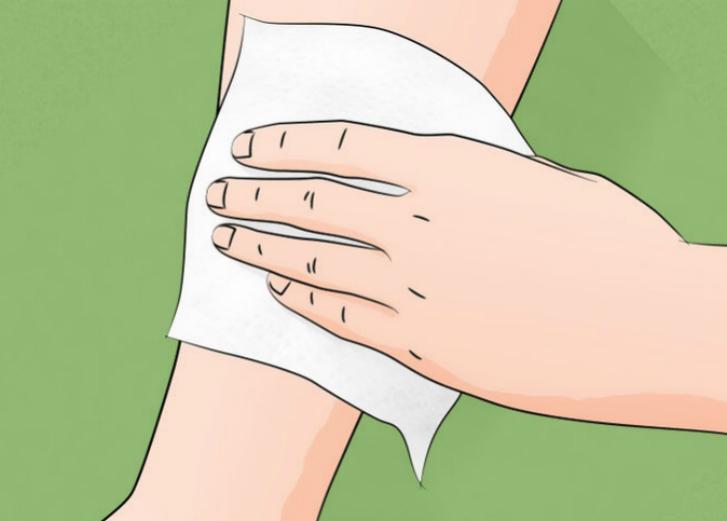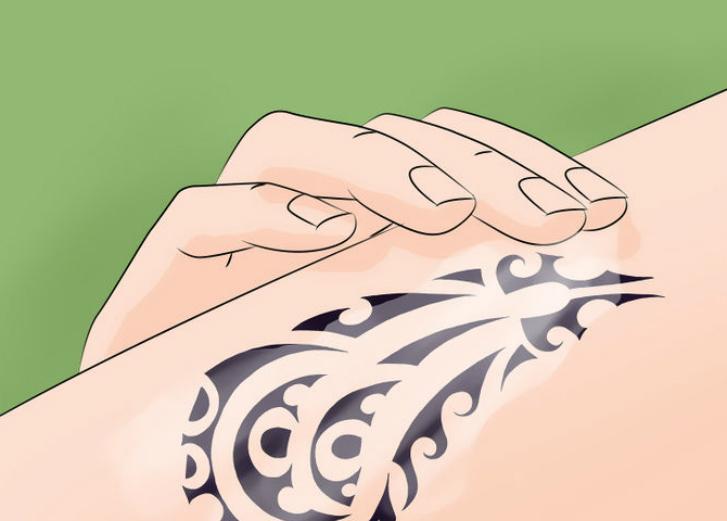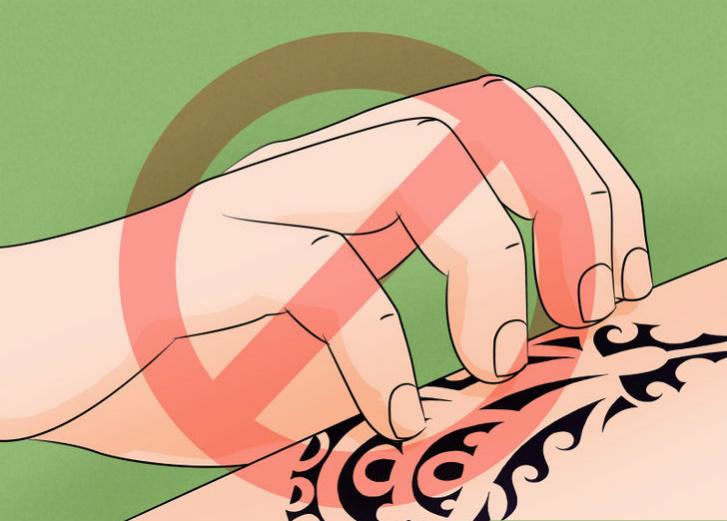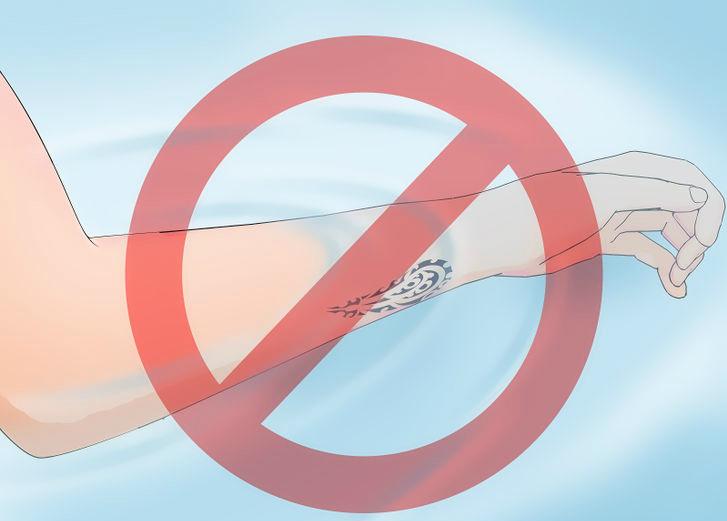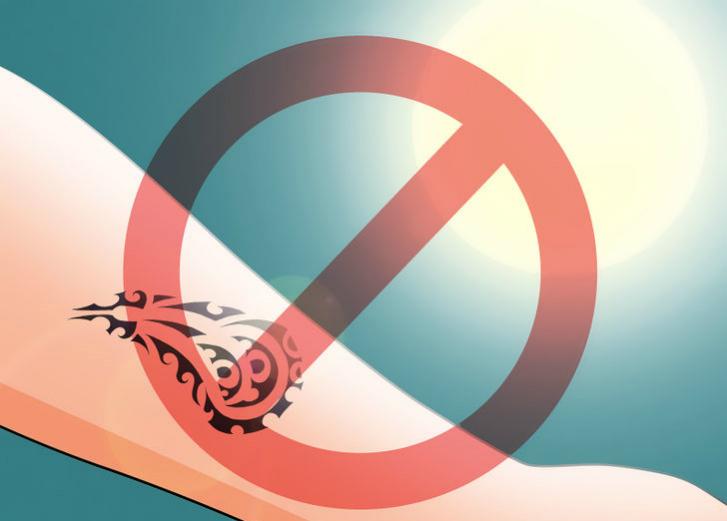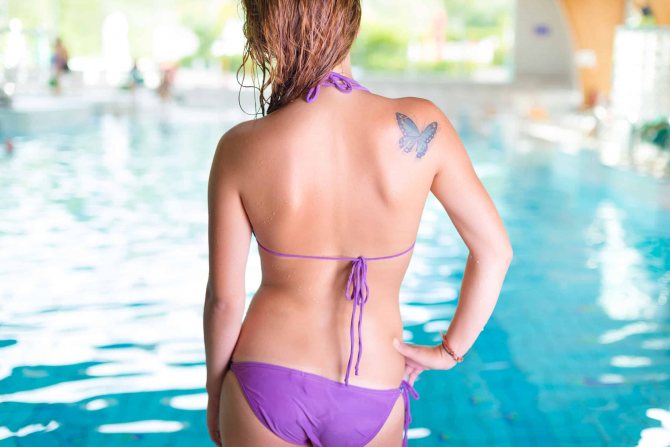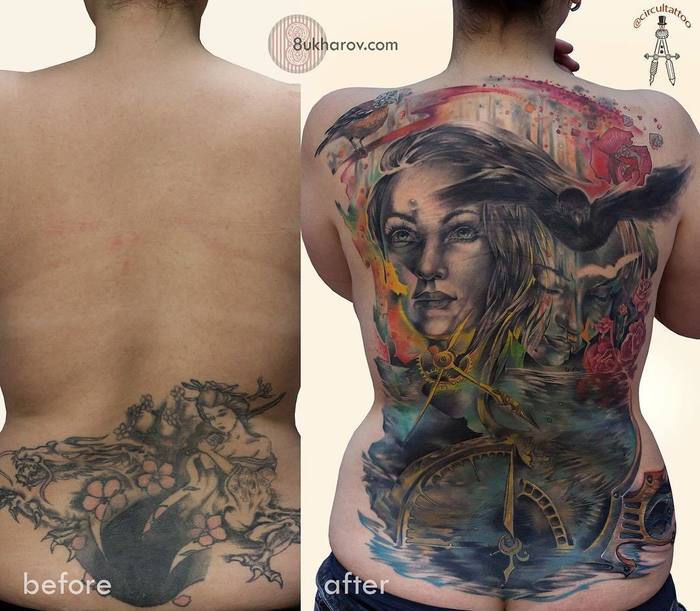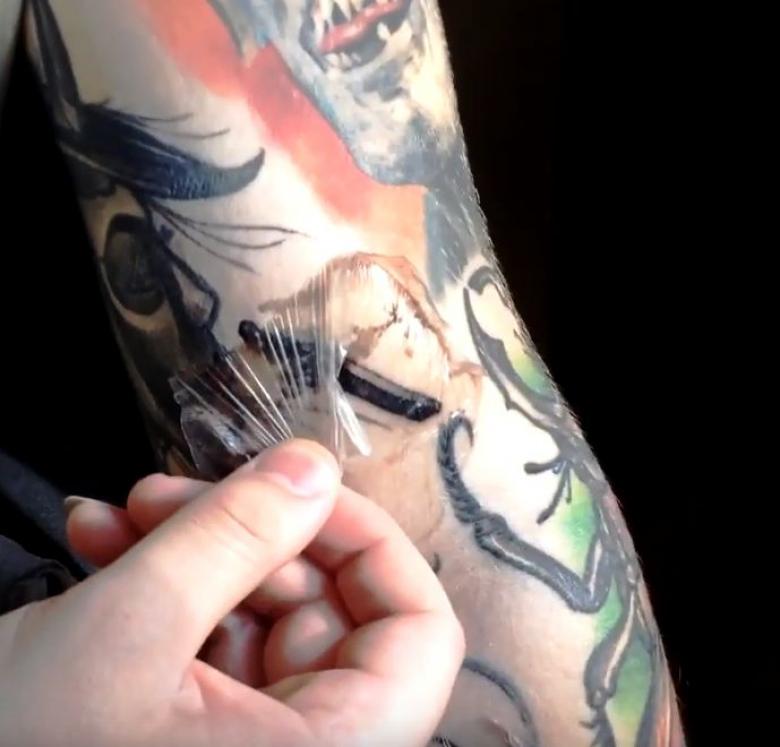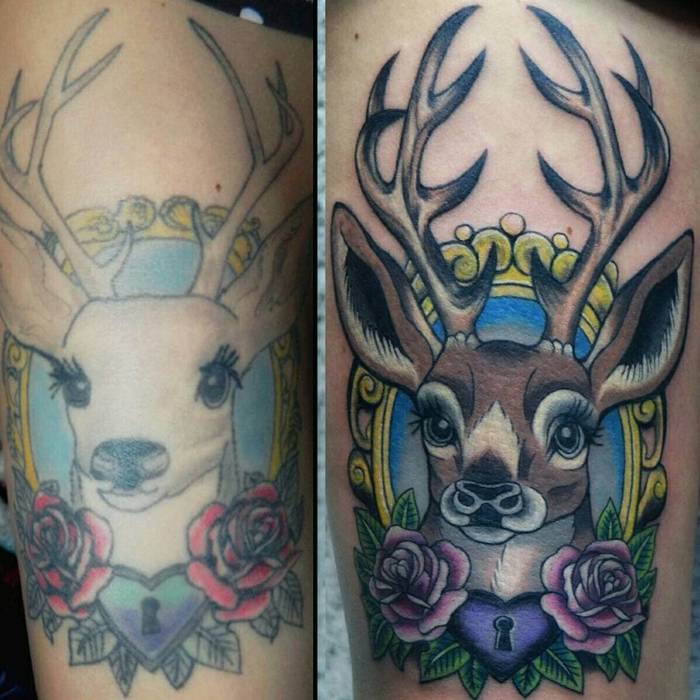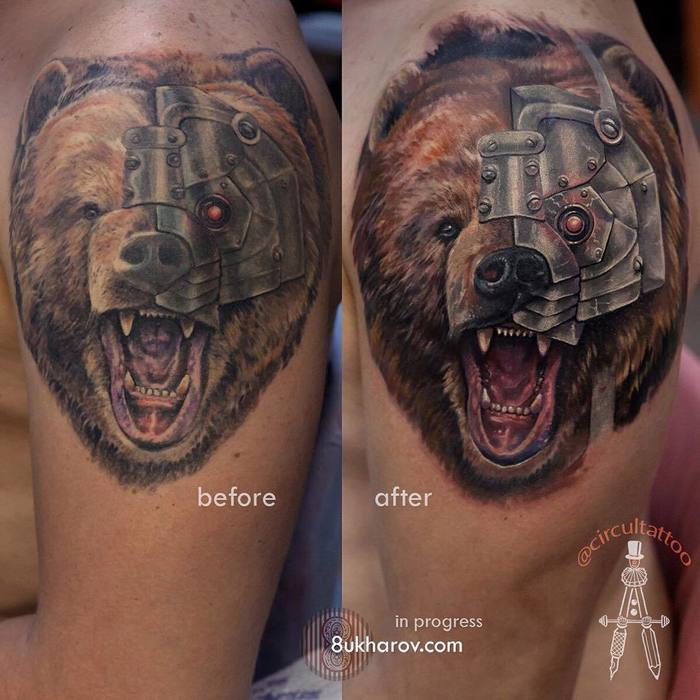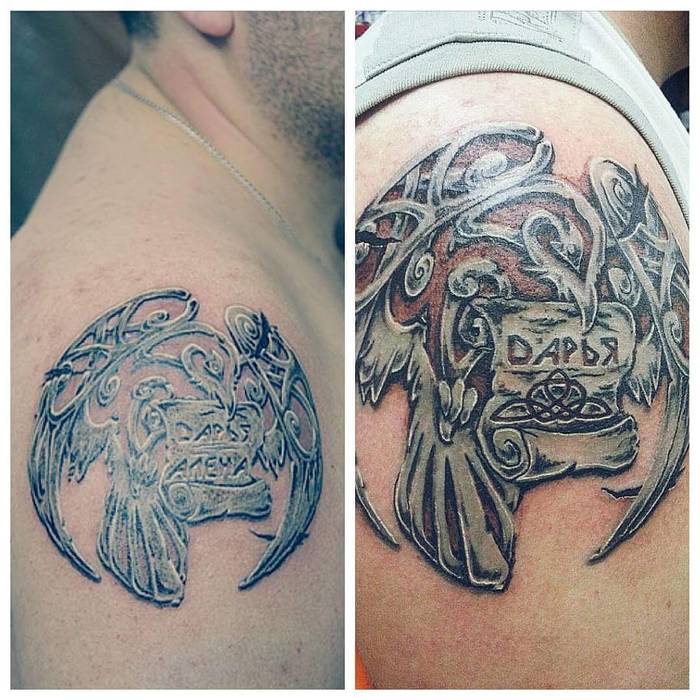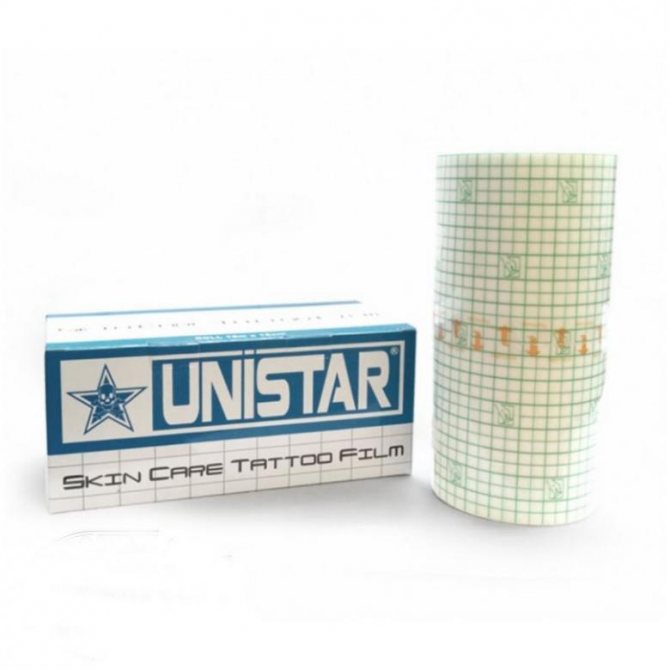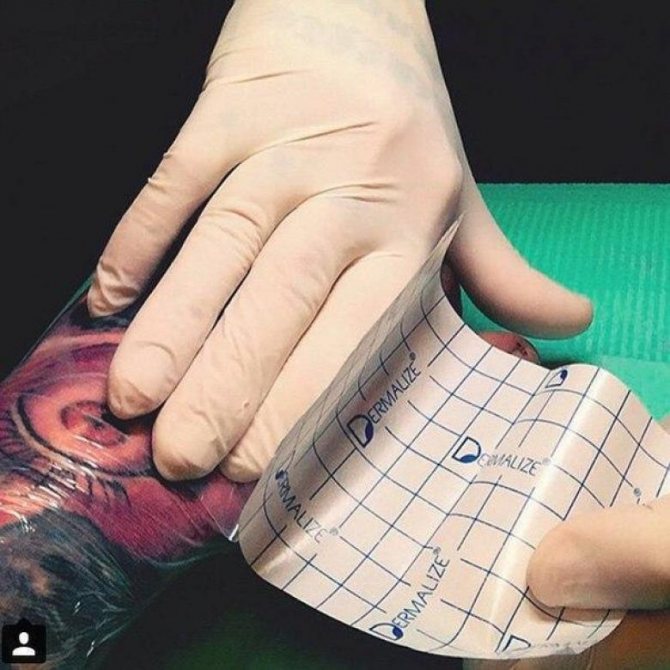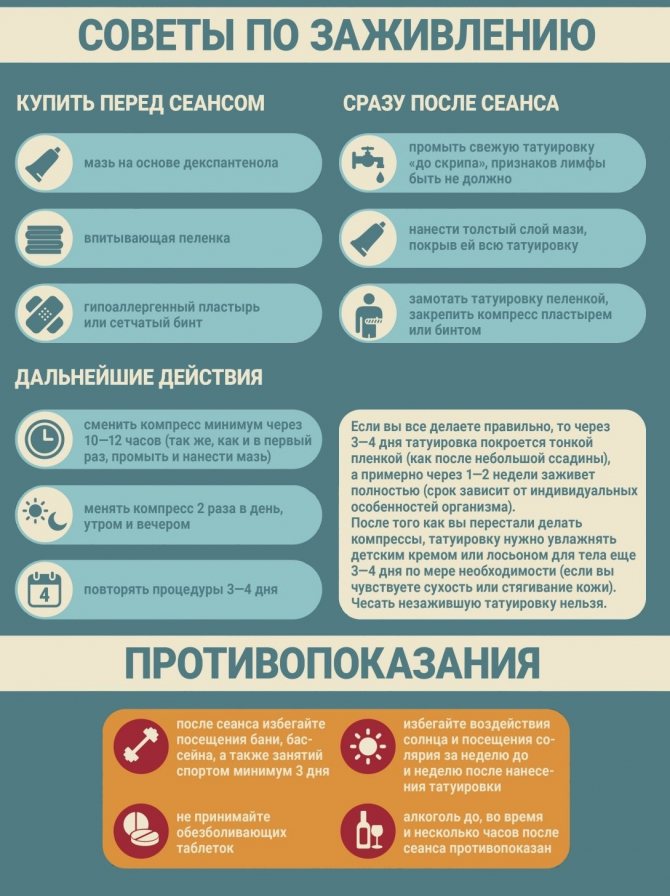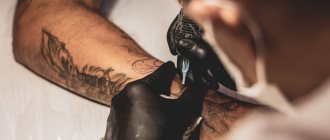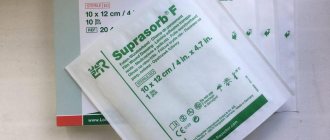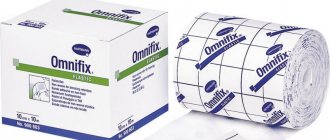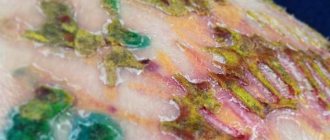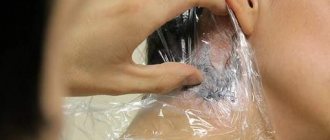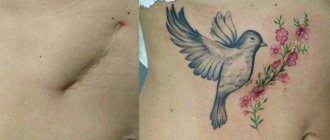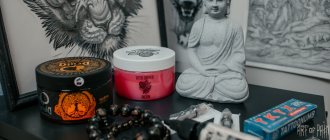Why is it necessary to care for a tattoo? The process of tattooing is a hammering of paint under the skin, which is immediately traumatized, and the fresh drawing at first looks like one continuous wound. Therefore, until the complete healing is required to undergo a period of rehabilitation, otherwise there can be serious complications. Having decided to put an image on the body, it is important for everyone to know how to take care of the tattoo.
And in order for the image to remain clear and bright, care for it must be competent and correct. If the responsible approach to the recovery process, it will pass without damage to health, and the tattoo will enjoy the beauty for many years.
Why you need to know how to care for your tattoo
The main and most important rule of tattoo care is conscientiousness. Regardless of the master, salon, the size of the picture - you should always take care of the tattoo.
Pay attention.
The very process of tattooing is the damage of the protective epithelium. A needle with ink penetrates under the upper layer of the skin, after which it begins to peel off actively.
Remember how you used to pinch your knees when you were a kid? The skin on them tightened film, or even worse - the crust, later began to be rough and itchy. If the upper layer of the wound was accidentally torn off, under the crust there was still not healed delicate skin. A scar was likely to form. This was roughly the case with the new tattoo.
It is in the first days after tattooing you need to pay attention to the state of the skin. If it takes a film or worse crust, the probability of removing the latter together with the paint is very high. At the same time there is a risk of festering.
Important!
With the formation of pus, a visit to the doctor cannot be avoided, and the beautiful tattoo should be forgotten for a very long time, if not forever. That is why it is necessary to follow certain rules!

In what cases is a visit to the salon still required?
Among the reasons for which it is necessary to visit the tattoo salon repeatedly are also:
- Deformation of contours due to weight gain or loss;
- Allergic skin reaction to paints;
- Mechanical damage to the body area.
In case of appearance of new scars on the place where there is a tattoo, it is necessary to be ready for the obligatory correction. When traumatized, the skin loses part of the dermis with the already existing dye, and in its place appears a new, but virgin white.
Such skin area does not contain the dye pigment, that is why the white spots on the tattoo are formed. To remove them from your skin, you need to have them corrected.
Please note. If you find an allergic reaction to the paint, it is necessary to inform the master as soon as possible. It is he who will help not only to remove the symptoms, but also to minimize the consequences. In any case, it is recommended to consult a doctor, because the consequences of allergies can be unpredictable.
Care for the tattoo in the first days after application
An experienced master and, of course, a good healing cream are needed to get an excellent drawing. There are a lot of the latter in the world, but more often than not the masters advise which one is better, as they have already faced the healing process more than once.
The first couple of days above the tattoo will be gathering blood suds. This is the epidermis actively trying to expel everything foreign from the body.
Sucrose appears almost immediately after the tattoo is applied. If you don't wrap and lubricate an area of skin, then after a while, the bloodstream will dry up and simply stick to the tissue that will be attached to it. It will be very difficult and painful to tear off this area of skin.
Therefore, certain actions should be taken that will help avoid traumatizing the skin.
Is it necessary to add new elements during the correction
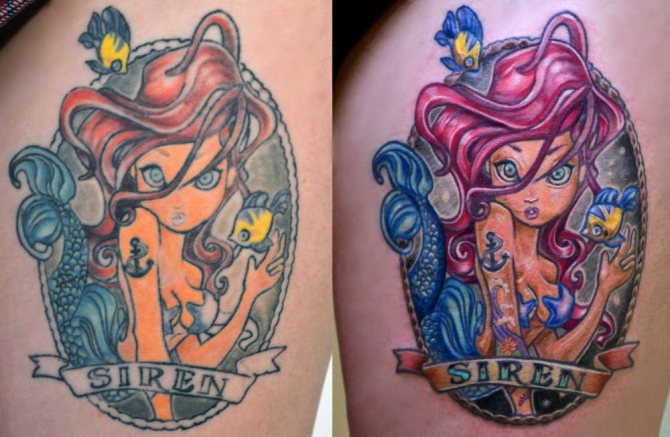

New elements in the correction can also be added at the request of the client. A tattoo that is no longer relevant or done hastily will look too unattractive on the body. This is why the correction is applied, which will add new colorful details to any work.
But it is possible to do without adding something new, many people consciously go to a correction session in order to correct the deficiencies of the master and make the contours clearer.
Algorithm of actions after the tattoo session
- wash your hands with antibacterial soap;
- carefully remove the bandage;
- Carefully rinse the tattoo site without pressure;
- blot with a napkin or let it dry on its own;
- apply healing cream;
- make a diaper bandage that is secured with tape or film.
If the bandage is secured with tape, it should not be very tight. The tattoo should breathe, and the film due to its properties does not allow it to do so. The film will not only help the pores to open, but will also absorb some of the paint that will be released. In addition, the residue of cream, paint and sweat can ruin your clothes.
Some experts allow you to walk around at home, after showering and in clean, spacious clothes, without a bandage. This will promote healing.
Before going outdoors, a bandage is imperative. Because not only dust, but also the exhaust fumes can have a detrimental effect on the tattoo.
Care actions in the first few days should be continued for a week. This will help the skin recover and avoid infection altogether. In addition, if you wear such a compress, the skin will not dry out, respectively, the paint will stick better and will not fade much.
In a week after the application of the tattoo, it is necessary to stop applying the bandage. The next 7 days should wash and lubricate the tattoo an average of three to four times a day. The bandage should be discontinued. During the late healing period, the body should breathe fully. If oxygen is cut off, the skin will begin to dry out and peel off.


Tattoo correction after healing: a necessity or a fad
In the world of tattoos, periodic correction procedures are necessary. First of all, as mentioned earlier, it is necessary to destroy traces of unsuccessful drawings, or rather the terrible work of non-professionals.
The time frame for tattoo correction after healing is different. First of all, it is necessary to listen to your master, who was directly involved in the drawing. Before getting to him, you should look at the portfolio and find out what the result may be in the end.
Tattoo master at the end of drawing often invites the client to himself after the healing, to be sure in the integrity of the figure. Sometimes it is decided that it is necessary to visit the salon again for a small correction.
Often it is necessary to refine some of the deficiencies, or to make sure that they are absent. In such a case, they can be corrected:
- contour;
- color;
- shading.
After healing, tattoo correction is necessary in case there are imperfections. If they are absent, then there is absolutely no need to visit the salon again. Determine the presence of gaps in the picture can you yourself, as well as the master.
When correcting only a healed tattoo, the master, most likely, will "do" not the whole image, but a part of it. Due to the fact that the paint on it is needed many times less, you pay less too. However, many tattoo-masters and at all do not take money for insignificant correction.
A special category are tattoos in the style of blackwork. When they are applied it is necessary to stipulate at once the possibility of tattoo correction after healing. In fact because of the saturated black pigment the skin does not immediately get the necessary shade. If you do not do this after the manifestation of grayness, then there is a chance to forever remain with a tattoo in gray-black tones.
Peculiarities of tattoo healing
The most important period after a tattoo is the first three to four days. During this time it is necessary to pay maximum attention to the skin and the figure, otherwise the result will be much worse than expected.
In the first few days the tattoo is covered with a film. Thanks to the use of a healing cream, it remains very thin. If the film is thick and coarse, the drawing will turn out a little distorted, some of the paint will leave with it. Therefore it is necessary to monitor the dryness of the skin, in this period it should remain quite soft.
After active healing, a thin film of skin over the tattoo begins to peel off. This is a natural process that should not be frightening. As a result of the fact that ink has been applied under the skin, there has been a violation of its integrity. Because of this, it is only natural that the top layer of skin will die off. You should not be afraid of the moment when it begins.
Especially do not need to call the master with cries for help and accusations that the skin is slipping. You just need to wait until the epidermis layer will not be restored naturally.
When the film starts to fall off actively, it should not be peeled off in any way. This will interfere with the skin's natural defenses and lead to uneven healing. Think back to your knees and the early crusts from wounds. Many of them turned into scars and remained forever.
A couple of days after application, the tattoo begins to actively itch. This is probably the most difficult period, which must be firmly endured. Itching the tattoo is not allowed under any circumstances. In the best case scenario, there will simply be an affected area of skin, and the ink will not set there properly. At worst, the wound will get infected by bacteria from your hands and fester.
After the top layer of skin peels off, the tattoo will be much paler than at first. This, too, is not worth fearing:
- First, the epidermis is partially renewed, but the basic ink remains at a deeper level;
- Secondly, if the master did everything correctly, the tattoo after 3-4 days will accept the necessary color.
Pay attention!
Tattoo masters on purpose make much more expressive colors at application, so that after removal of a film the drawing will get the necessary shade.
With the right work of the master the pallor of the tattoo will pass in a few days, the skin will continue to renew and the colors will fully acquire their brightness. That is why it is worth knowing how to properly care for the tattoo. Without a succession of a certain set of actions, the result can be not only pale, but also painful. It is worth remembering about the festering that occurs with improper care.
Food wrap.
Before there were medical remedies for tattoo healing, a simple food film was used for this purpose. In this economical option, the part of the body with the freshly applied image was disinfected, smeared with a regenerating ointment and wrapped with the film. However, the conditions created by this method promoted the formation of suds and the development of infection and harmful bacteria.
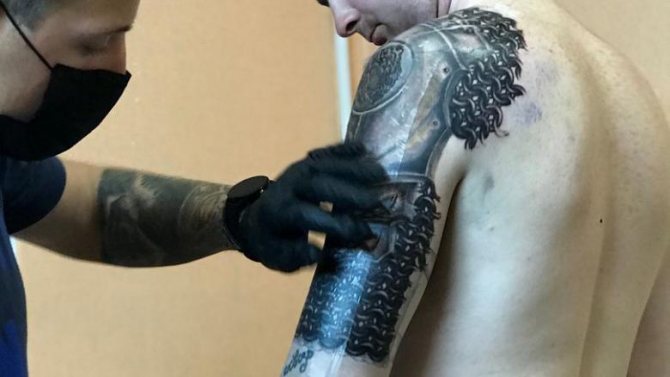

The use of food film has the following disadvantages:
- Regular dressing for 2 days with a 3-hour session is necessary;
- the duration of the full course of more than two weeks;
- it causes painful sensations when removed;
- it creates a greenhouse atmosphere, resulting in discomfort due to the lack of air;
- the film often slips due to the poor fixation;
- possible penetration of moisture;
- Risk of infection and infection through the damaged skin area.
In addition, the contours of the pattern are often disturbed, this occurs from exposure to antiseptic, soap and the film itself.
What can not be done when taking care of a tattoo?
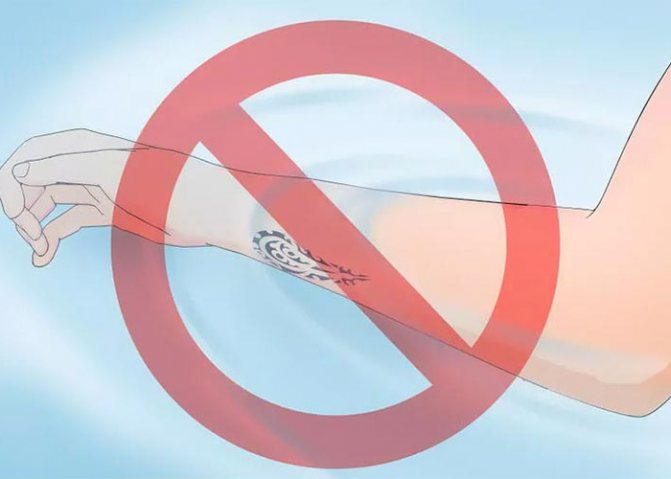

Prohibitions for the first days after tattooing, in addition to those listed above, are as follows:
- it is impossible to visit a bath/sauna;
- To beat a place of a tattoo;
- It is necessary to exclude going to the gym;
- Do not drink alcohol;
- refrain from sunbathing and visiting the swimming pool and the sea.
If all the prohibitions are understandable, then the contraindication to alcohol is a bit confusing for the beginner. The explanation for this fact is simple. When you drink alcohol, your blood pressure rises, and your body begins to actively eliminate it. This also occurs through the pores. In our case, the skin area with a tattoo is very vulnerable, so sweat can negatively affect the healing process.
Avoiding the sun is necessary so as not to over-dry the skin unnecessarily. In addition, the darker shade of the body makes the tattoo much less bright. The sun's rays kill the richness of the pigment used in the ink. This is why tanning lovers have to do tattoo correction much more often than those who avoid the ultraviolet.
The salvation from the sun remains a reliable sunscreen. It is necessary to use it according to the instructions or even a little more often. Such simple actions will keep the tattoo bright and attractive longer.
Why do you need correction
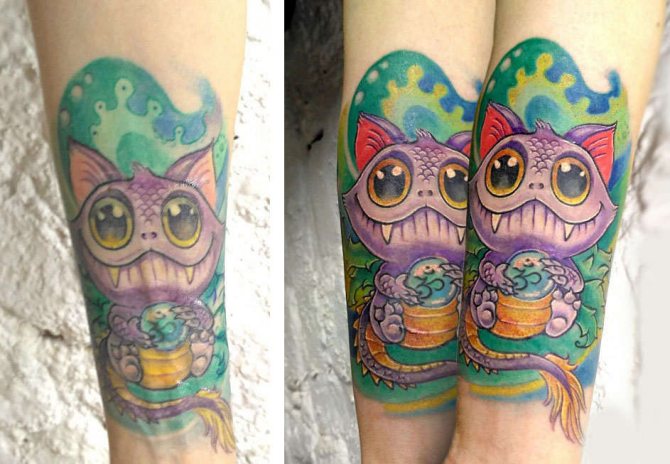

The correction procedure is not always mandatory and depends solely on the wishes of the client. A healed tattoo can bring a lot of problems to its owner. Poor quality work will always remind of itself and bother the eyes of others. The repeated visit to a salon you can carry out only after 2 weeks after that beaten tattoo. During this time must pass a complete healing cycle, the success of which depends solely on you.
Time of healing depends on the location of the tattoo, the volume, thickness and depth of the lines.
Within 1-2 weeks heal areas where there is a small amount of subcutaneous fat, it's back, ankle, neck, elbow joint. Large volume tattoos are usually applied in several stages, so the recovery period takes up to 1 month.
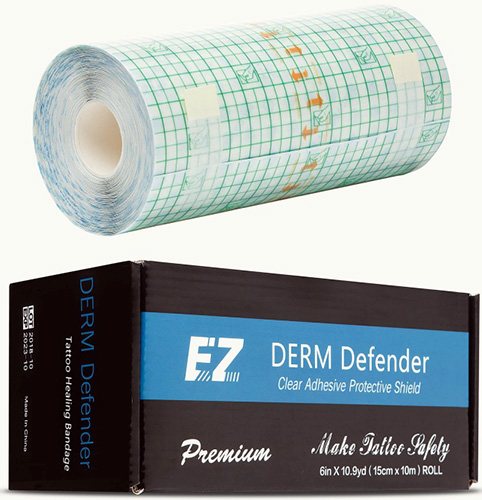

Tattoo Healing Film
Thin lines do not traumatize the dermis much, while deep, wide, thick drawings cause more discomfort when applied and take longer to heal. In areas of accumulation of subcutaneous fat: on the buttocks, chest, abdomen, tattooing is perceived less painful, but it does not affect the period of regeneration.
The desire to change the tattoo's subject or get rid of the body image completely
To remove individual elements of the image or the entire tattoo, the laser is used. The price of such a session is quite high. The most expensive is the procedure of total getting rid of the tattoo. Therefore, in order to save money, many people prefer to redo individual elements of the image. The price of the Cover Up procedure (masking, concealment) is higher than the cost of the original tattoo, because the correction procedure involves the laser apparatus and the master needs to think of a plot that is appropriate for the composition.
When correcting a tattoo with a laser the image elements that are difficult or impossible to cover are removed. If the part of the drawing that needs to be changed is too large, it is lightened as much as possible and new contours and filler are put on top of the old tattoo. Only an experienced and talented artist can create a new quality image using the old translucent lines.
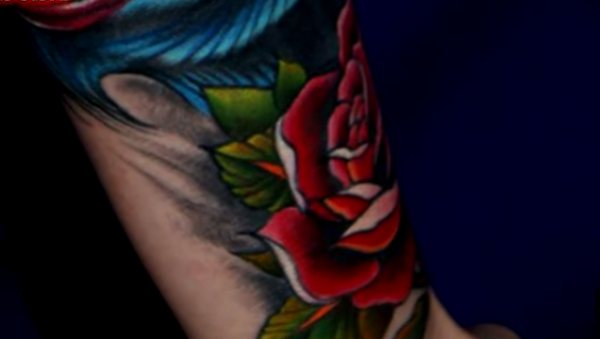

The new image will be larger than the previous drawing, as it should completely overlap the old lines. The colored subject may darken slightly after the session is over. The care of the corrected tattoo is the same as the original design.
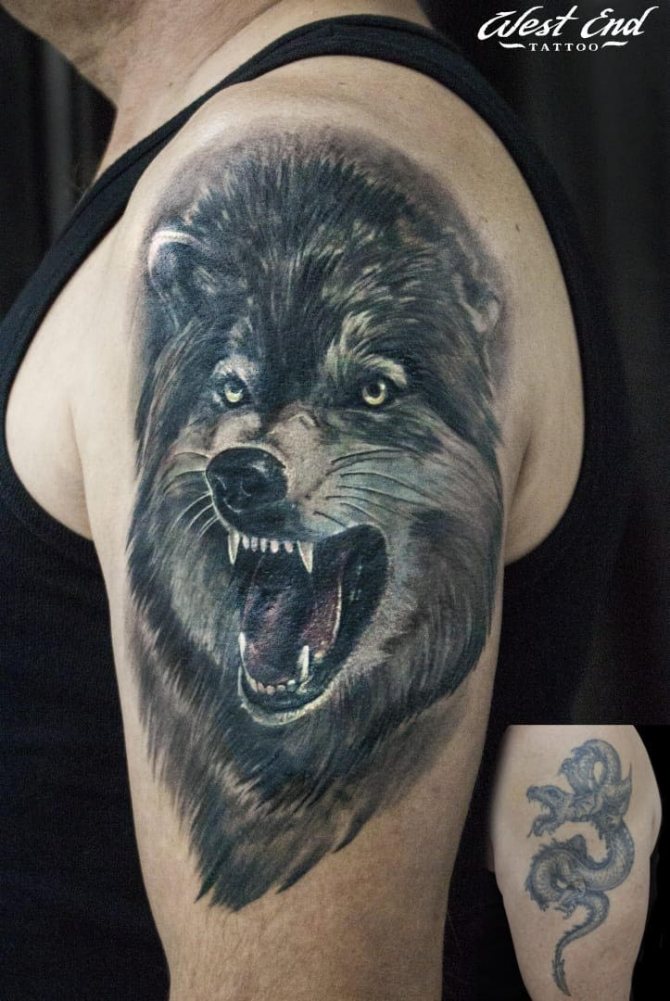

Share link:
Can you swim with a tattoo in the sea
You can, but not earlier than 30 days after the procedure. Although sea water is considered "curative", but in fact it has a huge number of microorganisms. In addition, salt can contribute to the fading of a fresh tattoo.
Do not underestimate another risk factor during the vacations at sea - the hot southern sun. Even an ordinary walk from the lounger under an umbrella to the water, and then back, will provide the skin a dose of harmful ultraviolet light. As a result, after a vacation, a fresh pattern may look like the work of at least a year ago. It is easy to conclude: it is better to postpone the vacation than to treat complications or renew a tattoo that is not even three months old.
How do you correct a tattoo that has lost its original appearance?
Most tattoos done in the last decade of the 20th century have fuzzy designs and blurry outlines. In those years, masters usually used low-quality pigments and primitive equipment. But over time, the color of even a quality tattoo fades, the outlines blur, and the design loses its original appeal. Problems can arise due to age-related skin changes - loss of elasticity, increase or decrease in the number of fat cells. You can bring back the beauty of the body image by correcting the colors of the borders and fillings, or in a more drastic way - by overlapping with another pattern.
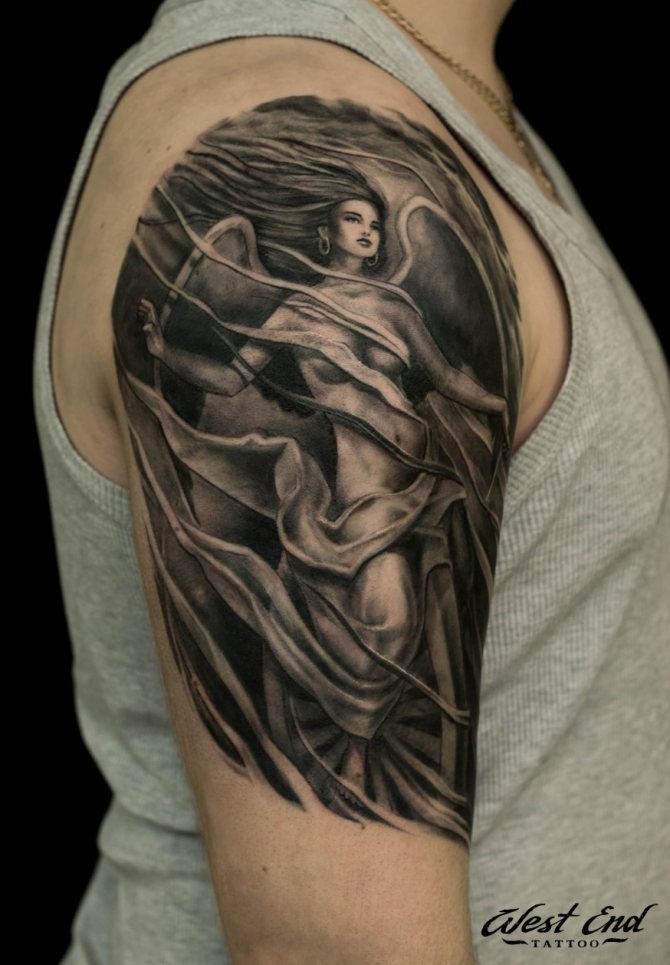

Removing
Remove the film from the tattoo preferably after five days after drawing the sketch. This period is enough for the body drawing to go through all stages of healing, and from the removal of the bandage did not arise any damage or injury. During this period, new skin tissue is formed, which does not require special care. The main thing is to remove the dressing correctly without harming yourself.
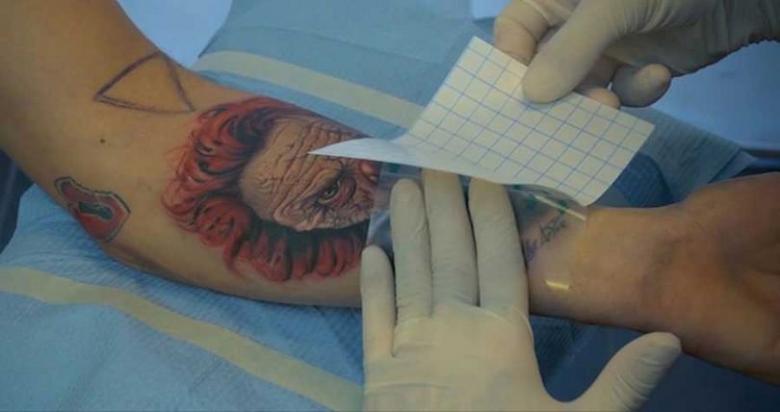

When removing the protective coating, you need to follow the recommendations given in the instructions to the film:
- Steaming with hot water for twenty minutes, which will allow you to remove the film without unnecessary problems;
- Grabbing the edge, gently pull the film, gradually pulling it away from the skin, so it's easier and neater to remove the bandage;
- After removing the tape, rinse the tattoo with warm water, rinsing off the remnants of blood and glue.
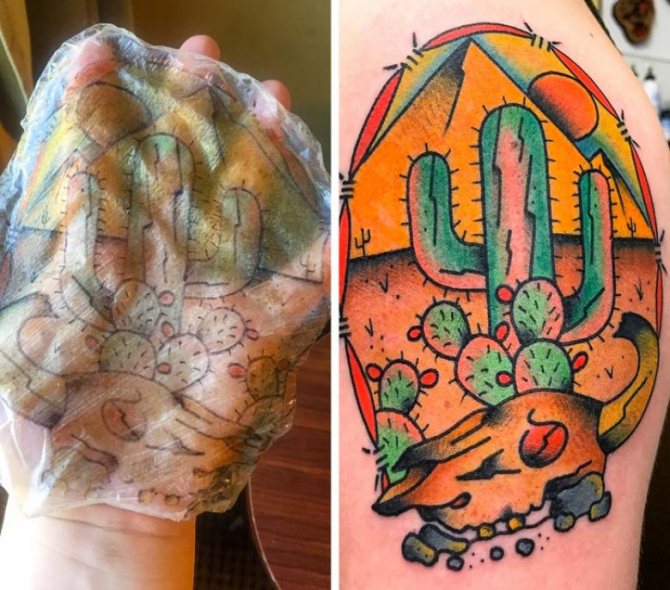

After all the actions you need to treat the skin with antiseptic, then spread a thin layer of cream with panthenol.
